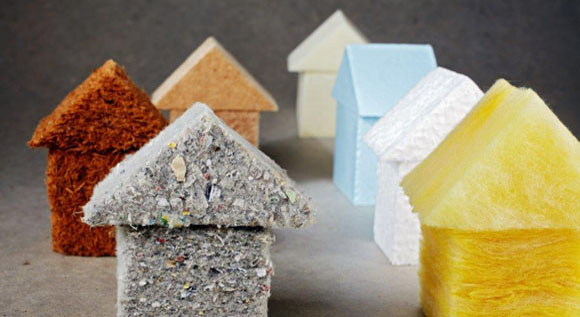Aerogels: small pores, big effect
If the energy transition is to succeed in the buildings sector, we will need innovative insulation materials which are both efficient and cheap. Aerolight, a prize-winning research project, is developing and testing new types of aerogels for the insulation of buildings. Come this way for a journey into the nanometre world.
 © Adobe Stock / Ingo Bartussek
© Adobe Stock / Ingo Bartussek
Aerogels are some of the world’s best insulating materials. However, it has so far been simply too expensive to mass-produce these thermal super insulators.
Let’s delve into a highly porous structure, in which pores just a few nanometres in size are entirely filled with air. The dendritic structure stoically and unyieldingly prevents the transfer of heat, which is why aerogel insulation systems can be much thinner (often just half as thick) and still have the same thermal performance as conventional materials. So they are more efficient, and save much more carbon emissions – e.g. when they are used in insulating render on residential buildings.
So far, it has been difficult and expensive to manufacture the super insulators.
The importance of this can easily be seen from the energy consumption of residential buildings. Roughly two-thirds of Germany’s energy consumption goes towards heating the country’s housing. This means that efficient and environmentally friendly thermal insulation can save a lot of energy. So far, however, most insulating materials have been made of polystyrene, which is manufactured from oil. This raw material is finite and cannot be re-used. Also, a lot of climate-damaging CO2 is released during the manufacturing process.
Mineral insulating materials with added aerogels are a highly promising alternative. They are very effective and can themselves be returned to the value chain, even after they have been used as an insulation system. However, their manufacture is highly complex and currently too expensive. For this reason, aerogels for lightweight concrete or insulating render are mainly used at present where other materials can’t be used – for example in historic buildings.
New manufacturing process saves time, costs and CO2
In the Aerolight research project, the Fraunhofer Institute for Environmental, Safety and Energy Technology UMSICHT has spent the last six years revolutionising the production process for the high-performance aerogel insulator. The aim is to make aerogels cheaply, and thus for a mass market. The outcome is a novel manufacturing process for aerogels which combines several production stages. This cuts the production costs by 50%. The production time is reduced from more than 10 to just 4 hours, and does not require any hazardous chemicals. The process has been successfully tested on a small scale, and is to be transferred to industrial scale in a next step.
At the end of October 2023, the researchers were awarded the innovation prize of the European Association for Research and Technology Organisation EARTO in Brussels in the Impact Expected category. The non-profit association awards the prize to products and services offering a high social or economic benefit to the EU. The project had already been awarded the Fraunhofer Prize in May 2023.
Further information
- Press release from the Fraunhofer: “European Innovation Award EARTO 2023 for sustainable and cost-effective manufacturing process of aerogels”
- Press release from the Fraunhofer: “Aerogel insulation material for the construction industry and lightweight design”
- Press release from the Fraunhofer: “Joseph von Fraunhofer Prize 2023”
- Article by the Federal Ministry for Economic Affairs and Climate Action: “Lightweight Technology Transfer Programme (TTP LB)” (in German only)

